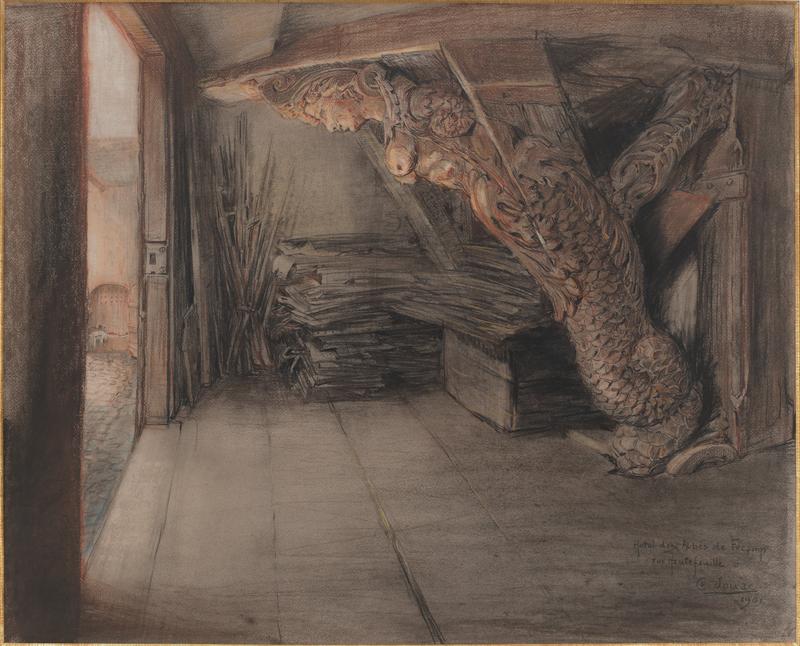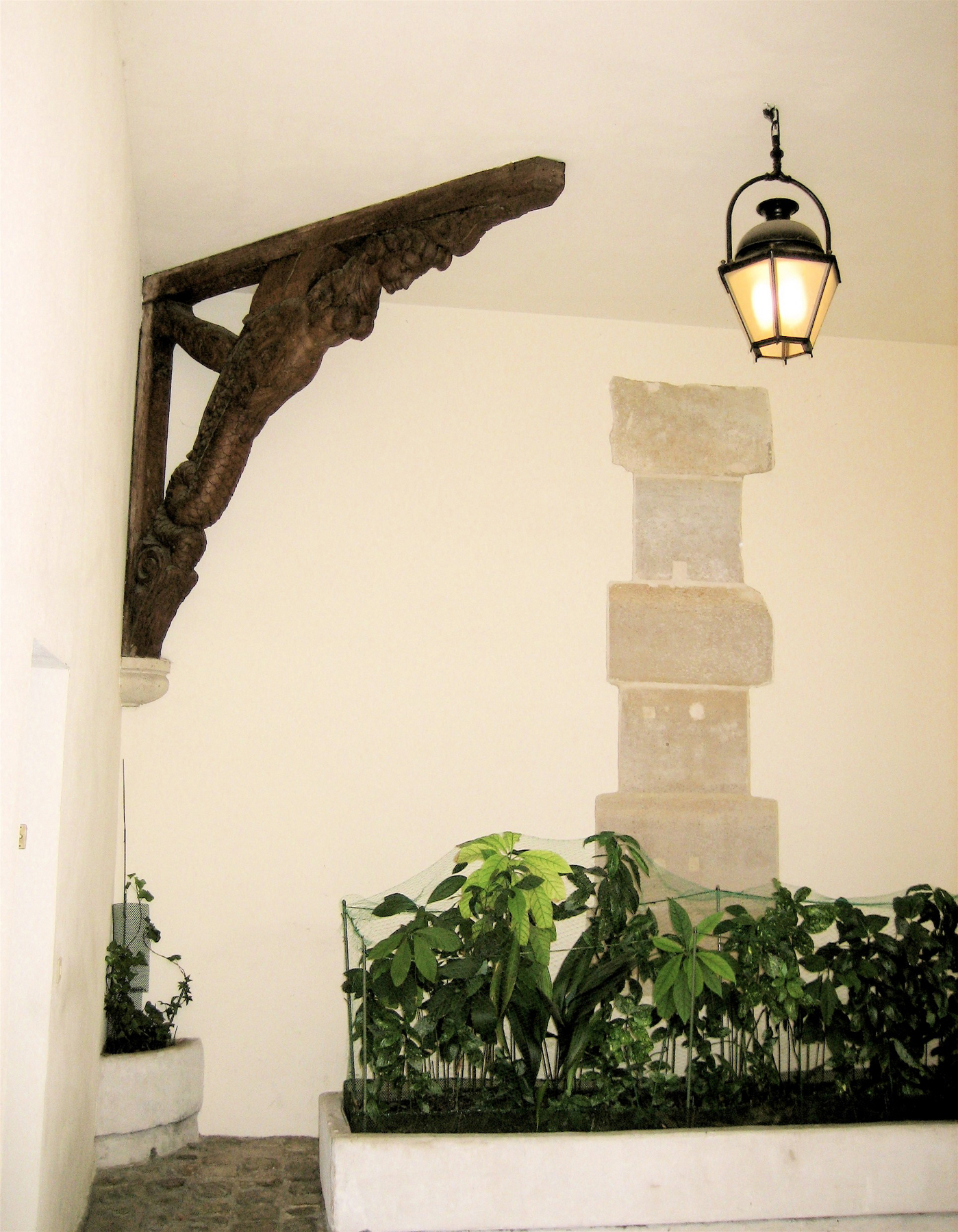
92. Charles Jouas, The Mermaid of Hautefeuille Street
| Artist | Charles Jouas, French, Paris 1866–Paris 1942 |
| Title, Date | The Mermaid of Hautefeuille Street (La sirène de la rue Hautefeuille), 1901 |
| Medium | Conté pencil highlighted with white chalk |
| Dimensions | 20 7/8 × 25 9/16 in. (53 × 65 cm) |
| Inscriptions + Marks | Lower right: Hôtel des Abbés de Fécamp / rue Hautefeuille 6 / Ch Jouas / 1901 |
| Provenance | Possibly sold Important tableau anciens, dessins anciens et du XIX siècle, Piasa, Drouot, Paris, June 25, 1999, no. 206, as “Proue en bois sculpté dans les combles de l’Hôtel des Abbés de Fécamp” (and given different dimensions than present sheet). [Jane Roberts Fine Arts, Paris, until 2007; to Weisberg]; Yvonne and Gabriel Weisberg, Minneapolis |
| Exhibition History | "Reflections on Reality: Drawings and Paintings from the Weisberg Collection," Mia, 2022–23 |
| Credit Line | Promised gift of Gabriel P. and Yvonne M.L. Weisberg, Minneapolis |

A prolific illustrator and printmaker, Charles Jouas made it his mission to find and record authentic remnants of the Middle Ages. The mermaid pictured here, also called a siren or serpent, is one such object. It was carved into an oak strut and installed in the first Hôtel des Abbés de Fécamp, constructed in Paris in 1292 in the rue Hautefeuille for the abbots of Fécamp, a town in Normandy.1 The building was destroyed by fire in the sixteenth century, but the strut miraculously survived. In 1901 Jouas located the creature in a storage space, leaning against a wall. In the 1960s, when the building was restored, the beam was reincorporated into the architecture (fig. 1).
The original significance of this mermaid has been lost, but many historians think that the strut originally came from a medieval house in the nearby rue Serpente, in the sixth arrondissement.2 This is also the neighborhood where Jouas had a studio and printing press, on the Cour de Rohan. The artist was known to roam the area in search of unusual subjects. Taking his cue from history, he drew the mermaid here as a discarded icon and gave the work a melancholic dimension.
GPW
Notes
The structure was built by Guillaume IV de Putot, abbé de Fécamp, at the corner of rue Hautefeuille and rue Percée-Saint-André, now Impasse Hautefeuille. See https://fr.wikipedia.org/wiki/Hôtel_des_abbés_de_Fécamp ↩︎
The author is indebted to Jane Roberts, Paris, for some of the information concerning the history of the mermaid, or siren, and its connection to rue Hautefeuille. ↩︎